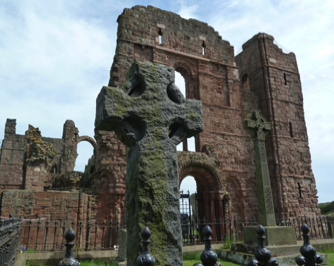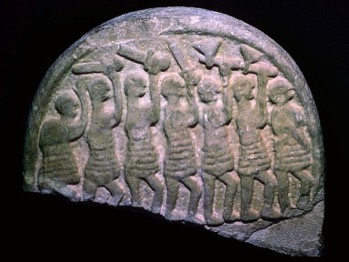Welcome to Research Group


Neil Paskin © 2011 (www.neilpaskin.com)
The Lindisfarne Research Group, also known as HUM-807, is a research group based at the Department of Philology at the University of Almería. Its current members include José Francisco Fernández Sánchez (Senior Researcher), Madalina Armie, Germán Asensio Peral, Leticia de la Paz de Dios, Blasina Cantizano Márquez, José R. Ibáñez, Ángeles Jordán Soriano, and Verónica Membrive Pérez, all of whom are faculty members of the Department of Philology at the University of Almería. Additionally, the Lindisfarne Research Group includes members from other universities: Santiago Rodríguez Guerrero-Strachan, a Senior Lecturer at the University of Valladolid, and Dimitrios Tsokanos, also a Lecturer at Loughborough College, in the United Kingdom. Sofía Alférez Mendía, a Ph.D. student, conducting her doctoral research at the University of Almeria, is also affiliated with this group.
The Lindisfarne Research Group is comprised of scholars who are interested in the analysis and description of the main trends in contemporary literature in English, as well as other cultural manifestations. The Group has particular strengths in the study of the short story in English. Its main project consists of a survey of the short story collections published in Great Britain, Ireland, and the United States in the new millennium literature. The Group's research has also focused on English residents living in Southern Spain. A project funded by the Regional Government of Andalusia exemplifies the researchers' strength and motivation in this rapidly expanding field of knowledge.
Why Lindisfarne? Lindisfarne, also known as the Holy Island, is a tidal island on the North West Coast of England. Given by the Anglo-Saxon king Oswald to St. Aidan (died in 651), an Irish monk, the priory founded soon became a base from which the pagan Northumbrians would be converty to Christianity. It is famed as the home and original burial ground of St. Cuthbert (c. 634-687), who lived on Lindisfarne until his death. Its isolated position provided an ideal place to establish a seat of learning. Later on, Lindisfarne was used as a base from which to send missionaries to the rest of Britain and Northern Europe. However, the tranquility of the island was shuttered by Viking raiders plundered Lindisfarne in June 793. Further Viking attacks motivated the abandonment of the monastery, whose monks left with St. Cuthbert's remains.
During the following years, Lindisfarne became renowned for its scholarship as a centre of spiritual and intellectual formation against a backdrop of violence and unrest, thus producing the illuminated manuscripts Lindisfarne Gospels (714-720), one of the finest works in the style of Hiberno-Saxon. The far-reaching legacy of Lindisfarne is extremely important, thus uniting Irish, Briton, and Saxon heritages, laying down the foundations for formal education and investigation.
The choosing of Lindisfarne as a name for our Research Group is due to the situation of the Holy Island at the crossroads of the history of the British Isles as well as the breadth of scope in the cultural matters it represents.
Grupo de Investigación Lindisfarne
HUM-807 "Literatura y Cultura de
los Países de Habla Inglesa"
✆ +34 950.214.460
Web page created and maintained by José R. Ibáñez Ibáñez
Last update 8 October 2025


